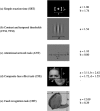Consumption of a Double-Fortified Salt Affects Perceptual, Attentional, and Mnemonic Functioning in Women in a Randomized Controlled Trial in India
- PMID: 29021371
- PMCID: PMC6519426
- DOI: 10.3945/jn.117.251587
Consumption of a Double-Fortified Salt Affects Perceptual, Attentional, and Mnemonic Functioning in Women in a Randomized Controlled Trial in India
Abstract
Background: Iron deficiency and iron deficiency anemia have been shown to have negative effects on aspects of perception, attention, and memory.Objective: The purpose of this investigation was to assess the extent to which increases in dietary iron consumption are related to improvements in behavioral measures of perceptual, attentional, and mnemonic function.Methods: Women were selected from a randomized, double-blind, controlled food-fortification trial involving ad libitum consumption of either a double-fortified salt (DFS) containing 47 mg potassium iodate/kg and 3.3 mg microencapsulated ferrous fumarate/g (1.1 mg elemental Fe/g) or a control iodized salt. Participants' blood iron status (primary outcomes) and cognitive functioning (secondary outcomes) were assessed at baseline and after 10 mo at endline. The study was performed on a tea plantation in the Darjeeling district of India. Participants (n = 126; 66% iron deficient and 49% anemic at baseline) were otherwise healthy women of reproductive age, 18-55 y.Results: Significant improvements were documented for iron status and for perceptual, attentional, and mnemonic function in the DFS group (percentage of variance accounted for: 16.5%) compared with the control group. In addition, the amount of change in perceptual and cognitive performance was significantly (P < 0.05) related to the amount of change in blood iron markers (mean percentage of variance accounted for: 16.0%) and baseline concentrations of blood iron markers (mean percentage of variance accounted for: 25.0%). Overall, there was evidence that the strongest effects of change in iron status were obtained for perceptual and low-level attentional function.Conclusion: DFS produced measurable and significant improvements in the perceptual, attentional, and mnemonic performance of Indian female tea pickers of reproductive age. This trial was registered at clinicaltrials.gov as NCT01032005.
Keywords: cognition; fortification; iron deficiency; memory; nutritional neuroscience; perception.
© 2017 American Society for Nutrition.
Conflict of interest statement
Author disclosures: MJW, LEM-K, JEHN, SV, and JDH, no conflicts of interest. GAR was previously affiliated with the Mathile Institute, which provided funding for this work. AW is associated with Nutrition International (formerly Micronutrient Initiative), which provided support for the study.
Figures


References
-
- Stevens GA, Finucane MM, De-Regil LM, Paciorek CJ, Flaxman SRF, Branca F, Peña-Rosas JP, Bhutta ZA, Ezzati M; Nutrition Impact Model Study Group (Anaemia) . Global, regional, and national trends in haemoglobin concentration and prevalence of total and severe anaemia in children and pregnant and non-pregnant women for 1995-2011: a systematic analysis of population-representative data. Lancet 2013;1:e16–25. - PMC - PubMed
-
- Haas JD. The effects of iron deficiency on physical performance. Mineral requirements for military personnel levels needed for cognitive and physical performance during garrison training. Washington (DC): Food and Nutrition Board, National Academies Press; 2006. p. 451–61.
-
- Haas JD, Brownlie T. Iron deficiency and reduced work capacity: a critical review of the research to determine a causal relationship. J Nutr 2001;131:676S–88S. - PubMed
-
- Murray-Kolb LE, Beard JL. Iron treatment normalizes cognitive functioning in young women. Am J Clin Nutr 2007;85:778–87. - PubMed
-
- Scott SP, Murray-Kolb LE. Iron status is associated with performance on executive functioning tasks in nonanemic young women. J Nutr 2016;146:30–7. - PubMed
Publication types
MeSH terms
Substances
Associated data
Grants and funding
LinkOut - more resources
Full Text Sources
Other Literature Sources
Medical

